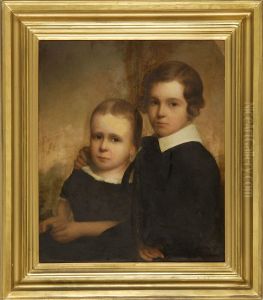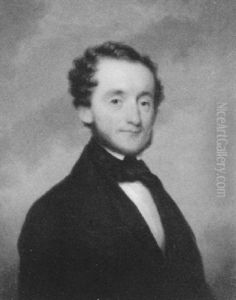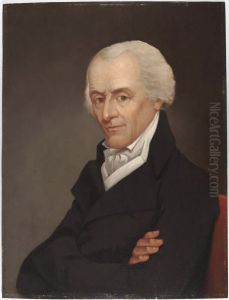Nathaniel Jocelyn Paintings
Nathaniel Jocelyn was an American painter and engraver born on January 31, 1796, in New Haven, Connecticut. As a significant figure in 19th-century American art, Jocelyn's contributions spanned portrait painting and engraving, making him a versatile and well-respected artist of his time. His early interest in art was likely nurtured by his family environment, as he was born into a family with a strong appreciation for the arts. His brother, Simeon Smith Jocelyn, was an abolitionist, indicating the progressive social environment that Nathaniel grew up in, which later influenced some of his works.
Jocelyn began his career as an engraver but swiftly expanded his skills to include painting. He apprenticed under the well-known engraver Abel Buell and later established himself as a portrait painter, a genre for which he would gain the most recognition. Jocelyn's ability to capture the essence and character of his subjects earned him a distinguished reputation. He painted numerous portraits of prominent figures of his time, including statesmen, scholars, and abolitionists. One of his most notable works is the portrait of Cinqué, the leader of the Amistad rebellion, demonstrating not only Jocelyn's skill as a painter but also his personal sympathies with the abolitionist cause.
Throughout his career, Nathaniel Jocelyn maintained a studio in New Haven, where he became a central figure in the city's artistic community. He was a founding member of the National Academy of Design in New York City, evidencing his significant role in the broader American art scene. Despite his successes, Jocelyn also faced challenges, particularly with the advent of photography, which significantly impacted the demand for portrait painting. Nevertheless, he adapted to these changes and continued to work until his later years.
Jocelyn's legacy is marked by his contributions to American portraiture and his ability to capture the spirit of a burgeoning nation through his subjects. His works are preserved in several prominent museums and collections, serving as a testament to his skill and importance in the American art historical canon. Nathaniel Jocelyn passed away on January 13, 1881, in New Haven, leaving behind a body of work that continues to be celebrated for its artistic merit and historical significance.


